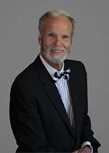The title is certainly an old play on words and, perhaps correctly, states the fact that no matter how radical a change the underlying components remain the same, as do the consequences. Such is true in many industries and ours is no different. Take the ANSI A300, (Part 9), and the companion publication, Best Management Practices (BMP) Series Tree Risk Assessment, regarding the assessment of tree risks.
We look now to a plethora of new changes. No longer is a tree hazardous; the tree now has certain levels of risk associated with it. The dangerous parts of a tree are hazardous, but not the entire tree; it is risk assessment in categories. It seems someone has come to the conclusion that no tree is safe, and convinced a committee of the same rational (would love to have been a fly on the wall to hear that presentation). Further, it is apparent that it must be taken as a fait accompli to live under or to recreate near a tree is a calculated risk. Ladies and Gentleman, faites vos jeux, please!
We are now required to learn and master an entirely new realm of tree assessment protocol Tree Risk Assessment Qualification (TRAQ), complete with everything needed to detect defects in a tree. For an additional amount of money (financing available) you can book an appointment at Ollivanders Wand Shop in Diagon Alley to assist you in predicting failures of trees. This new approach to tree assessments is a big departure from the now obsolete, hazard tree appraisals. It is going to be a significant learning curve for many of us. It will cost a lot of money; albeit, money is a relevant matter. There are the registration fees, books to buy, time off work to attend the classes and take the exam, time to study, travel, lodging for the two day process, and sustenance. If you assess trees for their risk of failure you pretty much have to jump through the hoops and obtain this new designation; otherwise you risk segregation from the proverbial pack and will be left behind. As an important aside, you do get to put some new letters after your name and better resemble the label on a can of alphabet soup.
One very important difference in the new approach to risk management is the nuance that it is the Duty Holder (e.g. the tree owner or owner of the land that the tree is growing) that makes the call on what happens to the tree in the after situation of your risk assessment. The arborist no longer dictates what should happen to the tree. You can certainly offer an opinion as to what you think the proper course of action is to take (e.g. removal, pruning, etc.) but in the final analysis the decision falls to the Duty Holder, not the arborist. First the risk assessment is conducted by the arborist, then the decision of what to do by the Duty Holder. This component of the tree risk assessment has raised great debate in our professional circles. Every pundit worth his weight in chain saw safety is entering this debate or discussion very carefully dissecting the perception of risk that is allowable in their lives. Very interesting reading to be sure; however...
The "Greatest Boxer of All Time", Mohammad Ali, is quoted as saying, "Everybody has a game plan until I hit them". And so it is with attorneys in wrongful deaths and personal injury. The scorched-earth, take no prisoners, professionals look to risk and resultant perceptions associated with taking risks in a different light than we do. One way they view an incident involving injury or death is through the legal lens of negligence, and the four components thereof. The authors of the new tree risk assessment manuals must have overlooked that little detail. Don't you make the same mistake by omitting your opinion of what the Duty Holder ought to do-even if there is no obligation to do so according to our instructions, instructors, or relevant books. Remember that opposing counsel always has the huge advantage of hind sight, and constructive knowledge (that which you know or should have known had you taken the reasonable amount of time to find out). He/She also has the advantage of a very injured plaintiff, or worse, pictures of the decedent. What guide lines you correctly followed in your risk assessment pale in comparison to what levels of responsibility you are held to in a deposition. Every time you conduct a tree risk assessment you should be asking yourself questions of why you are doing certain things a certain way and why you reached a certain decision- just as if your every step was being scrutinized in a deposition or at trial; when doing risk assessment, it probably will one day.
More and more changes are taking place in our industry but in the courtroom things are pretty much staying the same.
Watch for this year's Trees and the Law Seminars which will be presented by the Florida Chapter this August.
Joe Samnik, is an Arborist Certified by the International Society of Arboriculture. Mr. Samnik has over 46 years of practice encompassing tree issues, arboreal and horticultural consulting, dispute resolution, tree and plant appraisals and expert witness in tree and landscape issues.
©Copyright - All Rights Reserved
DO NOT REPRODUCE WITHOUT WRITTEN PERMISSION BY AUTHOR.










